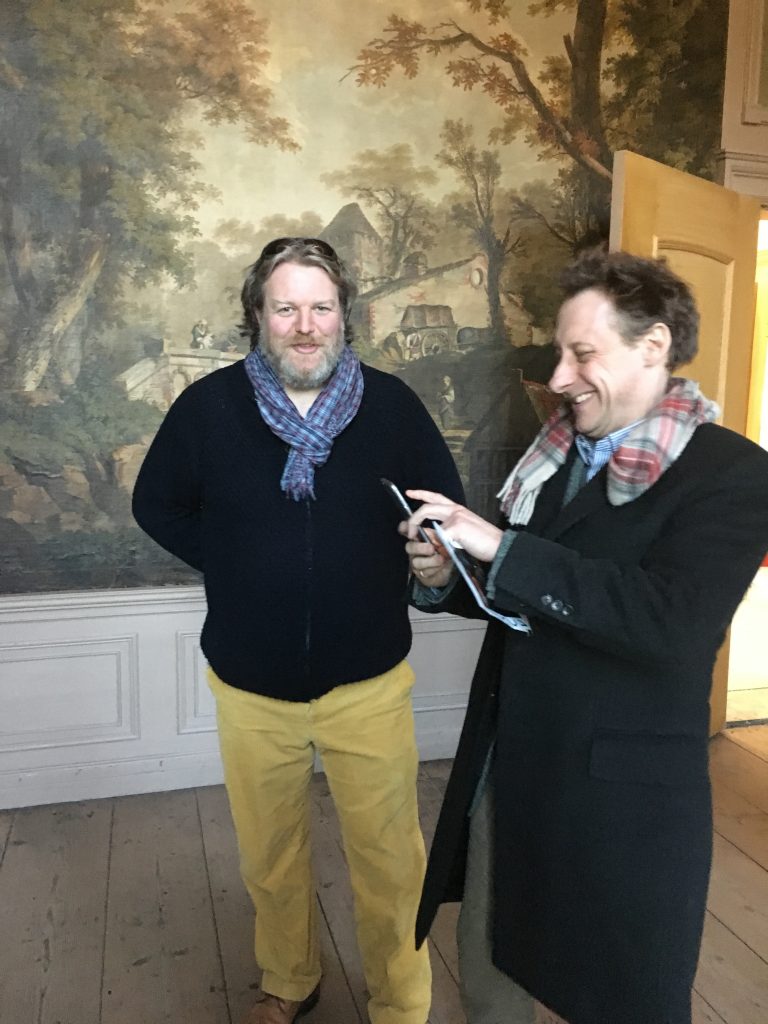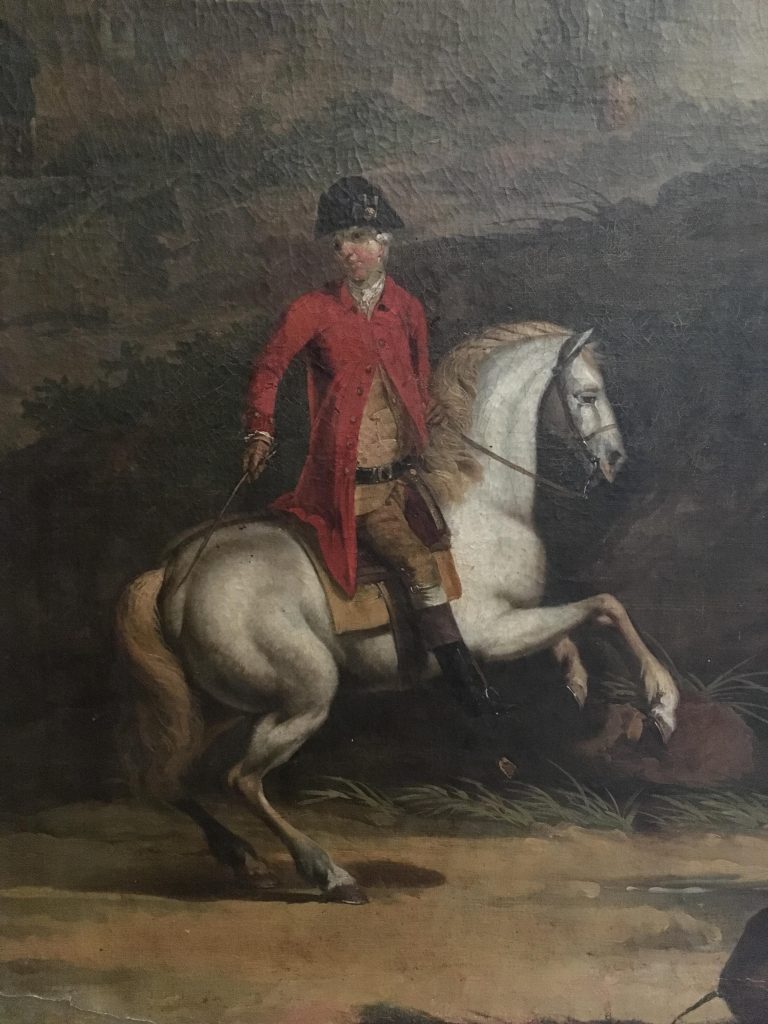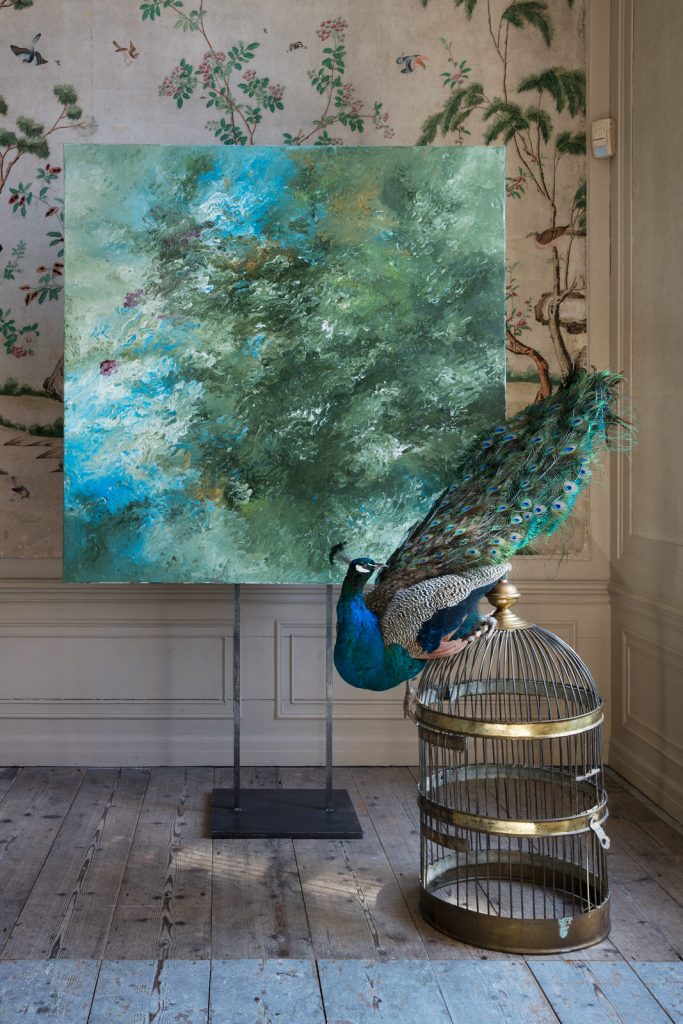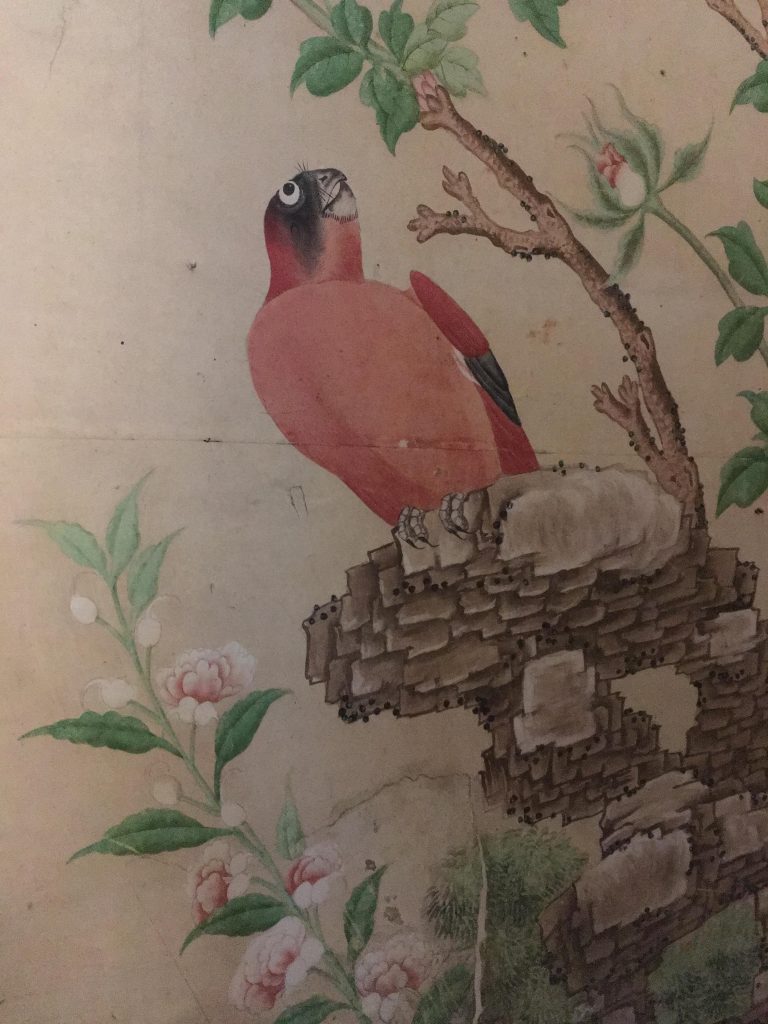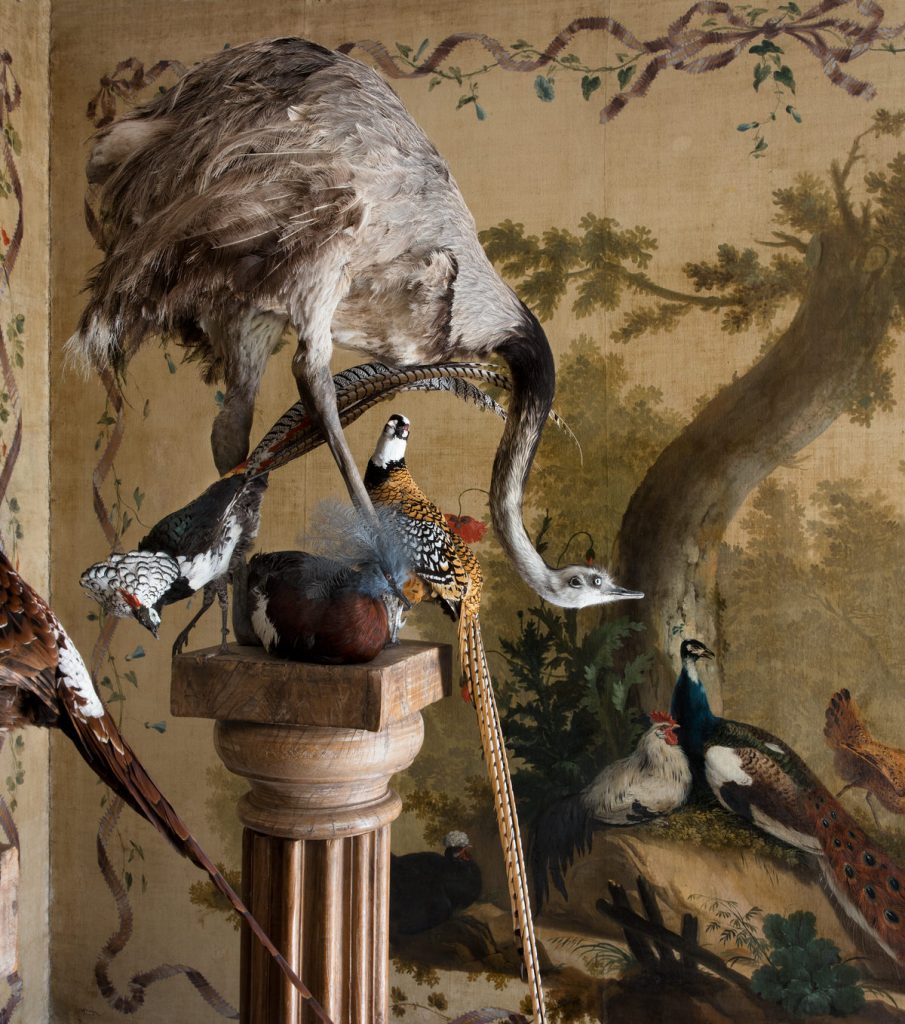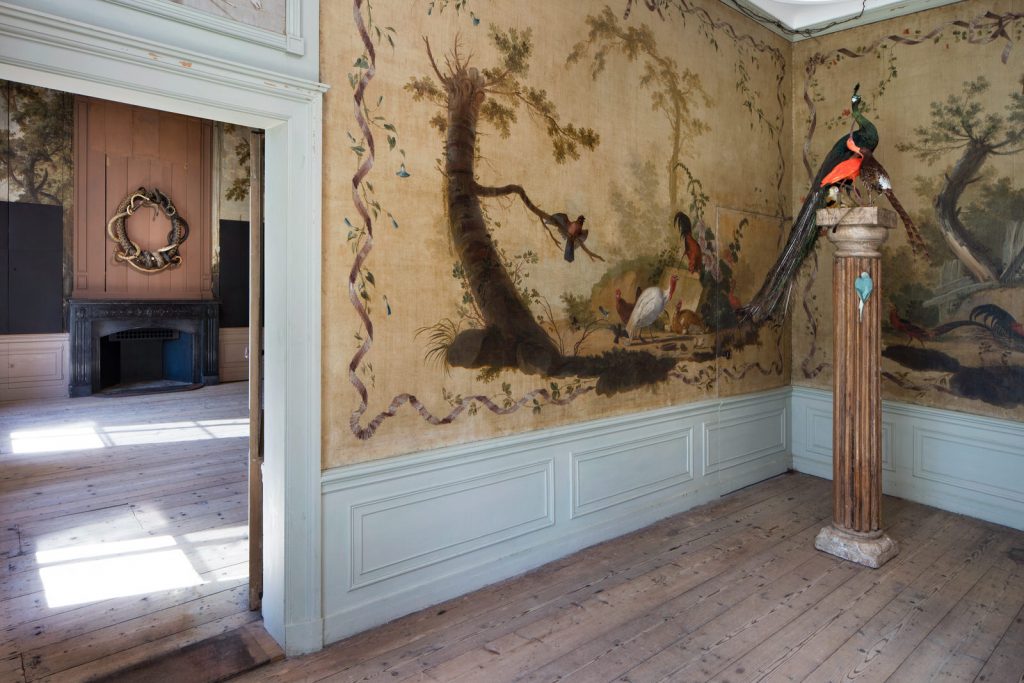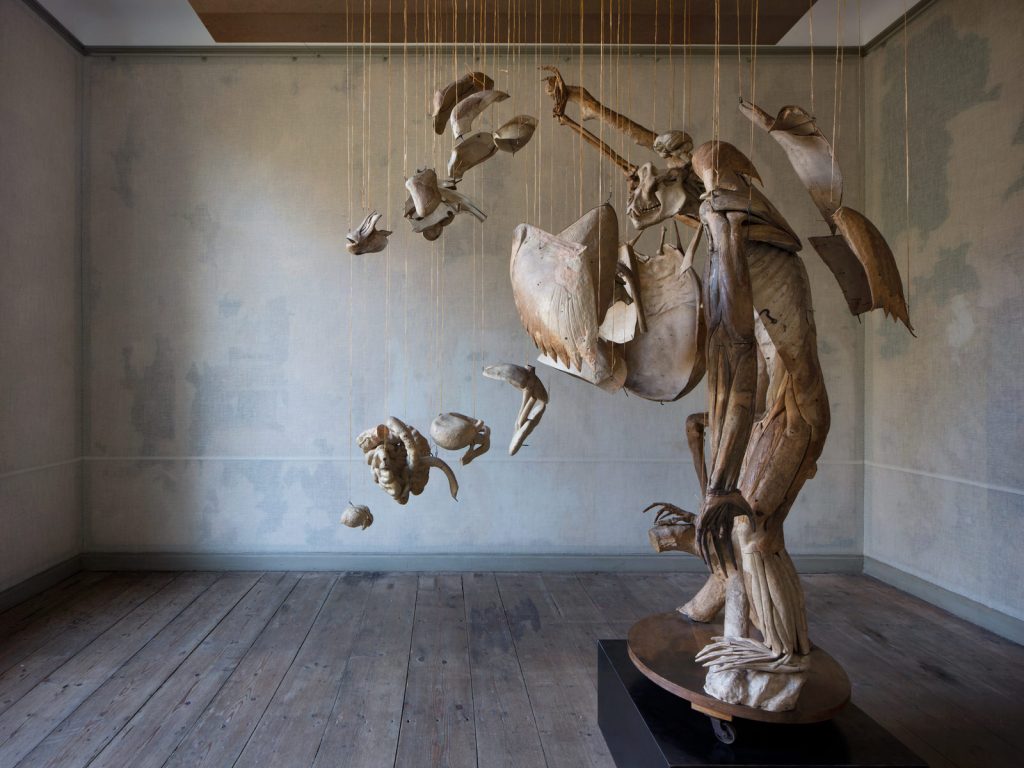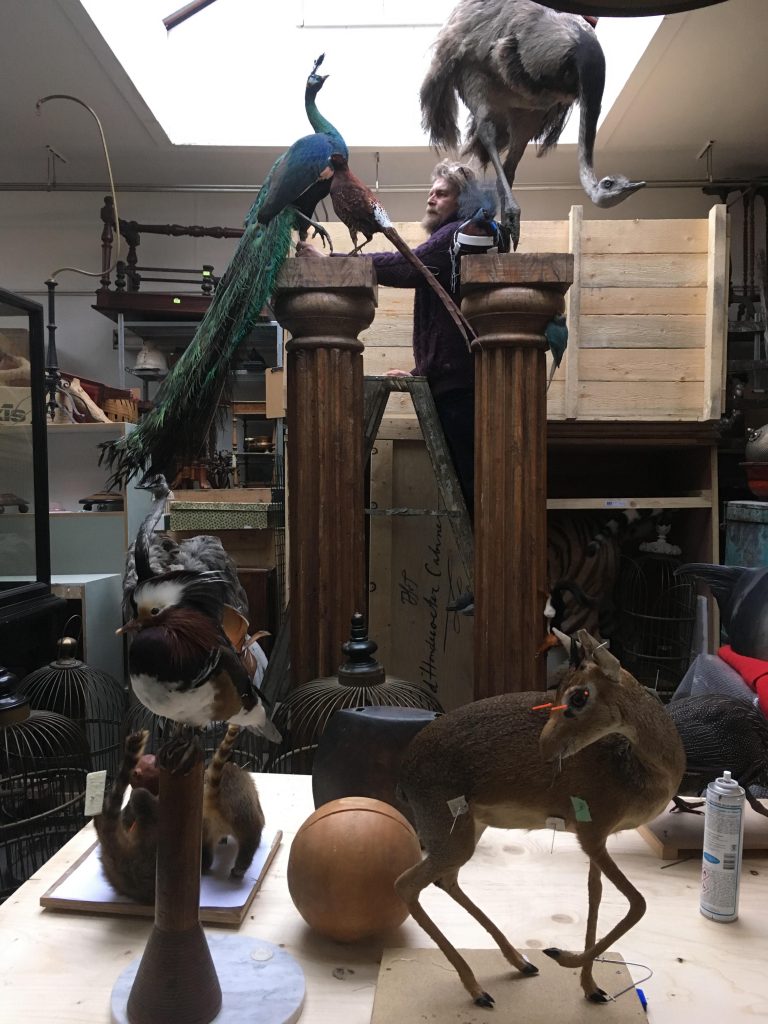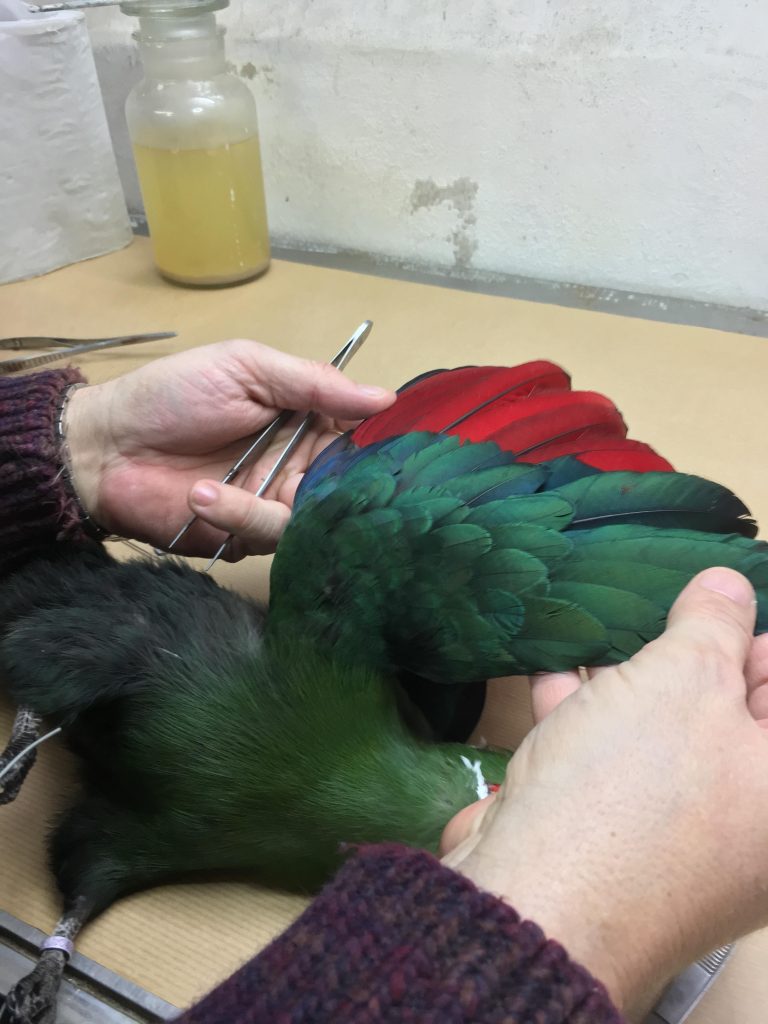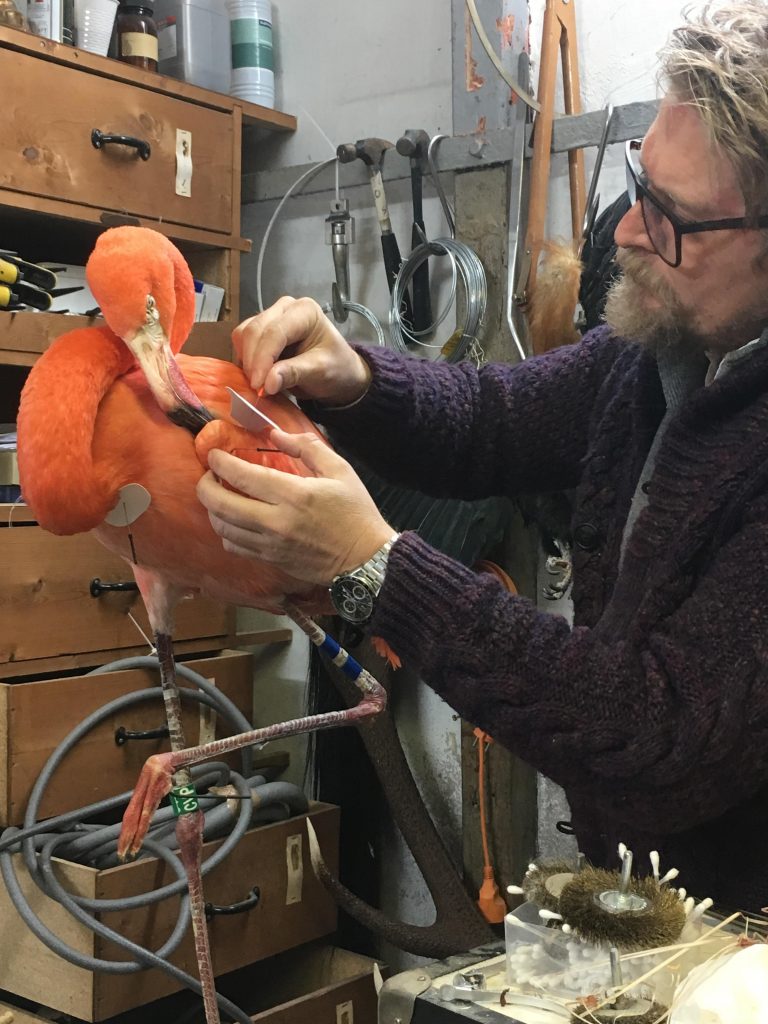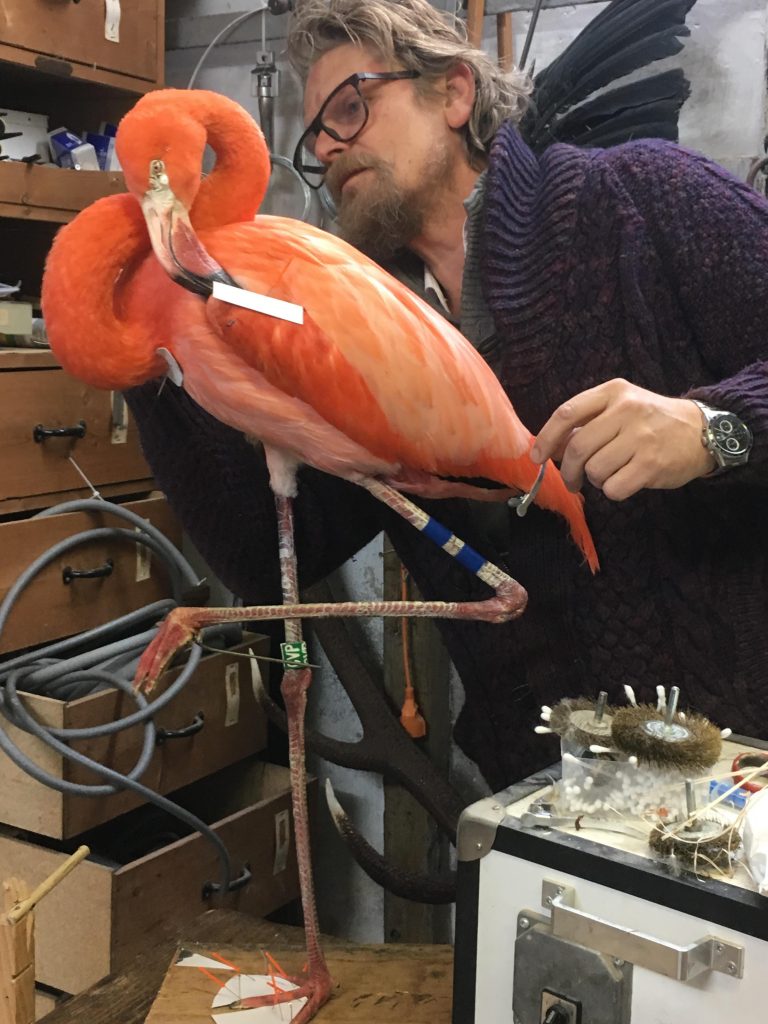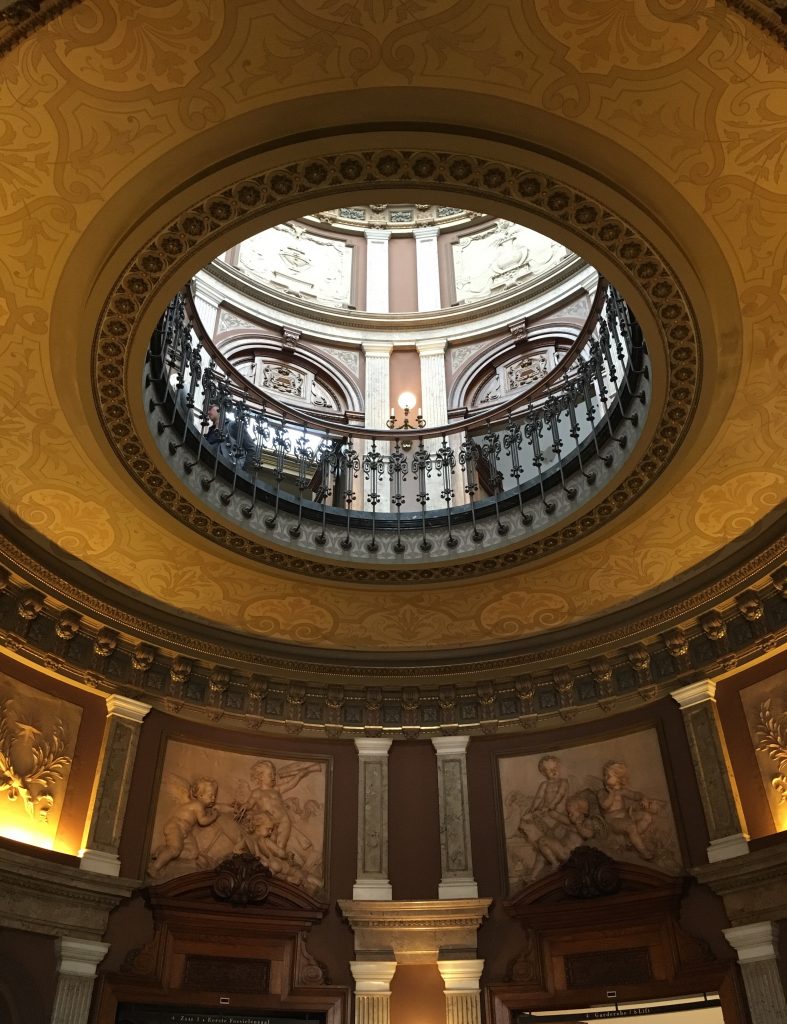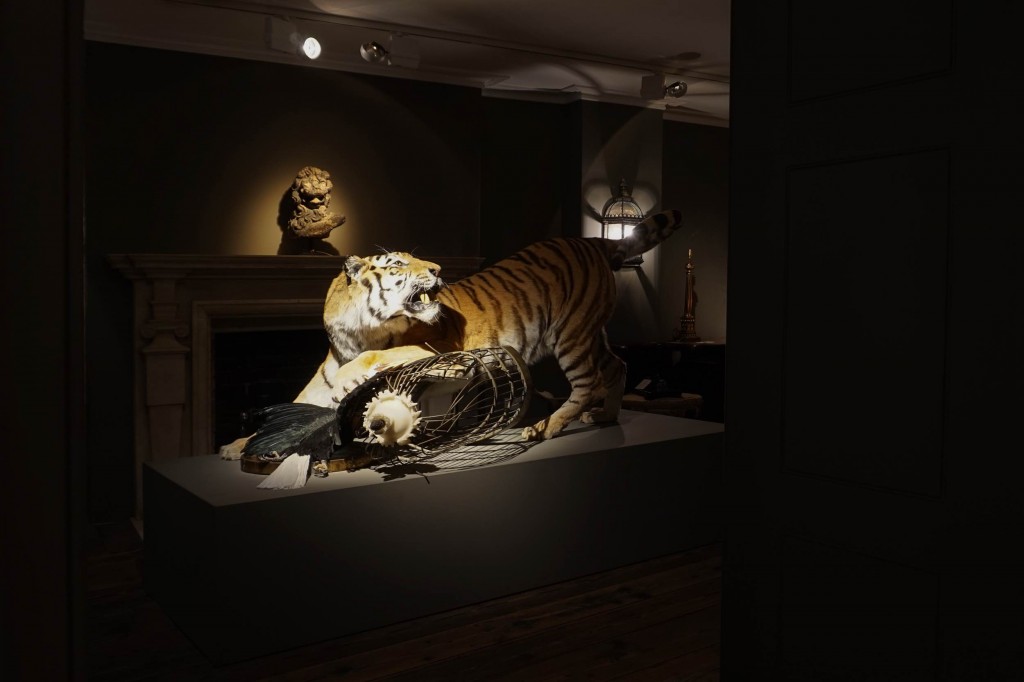Last weekend Charlotte and I travelled to Holland to see our friends and master taxidermists Sinke & van Tongeren, the taxidermist duo of Darwin, Sinke & van Tongeren at the unveiling of their new collaborative exhibition ‘TIER‘, at the MOA.
Friday was the opening night and the event was staggeringly beautiful, as I knew it would be. I had visited the artists a few weeks before and gathered an understanding of how the exhibition would look, but within the 18th Century walls of the Museum, I was blown away by the elegance and magnitude of the combination. Thanks to centuries of occasional residence, the Oud Amelisweerd country house is one of the best-preserved examples of an 18th Century nobleman’s home that exists in the Netherlands. Their extraordinary works of art are placed alongside two significant names in Dutch history, the 19th Century King of Holland, Lodewijk Napoleon whose house it was between 1808-1810, before he was exiled by his brother Napoleon.
The second is Armando – one of Holland’s most famous and prolific living artists, with whom they are collaborating as his paintings are part of the museum’s permanent collection.
A Peafowl on a cage stands in front of a painting by Armando, ‘Waldig, 10-7-13′
The exhibition of fine taxidermy art is laid out through the enfilade of rooms where the rich 18th Century history is still evident. Every room you entered took your breath away, as Sinke & Van Tongeren had made a piece of taxidermy to respond perfectly to each environment. 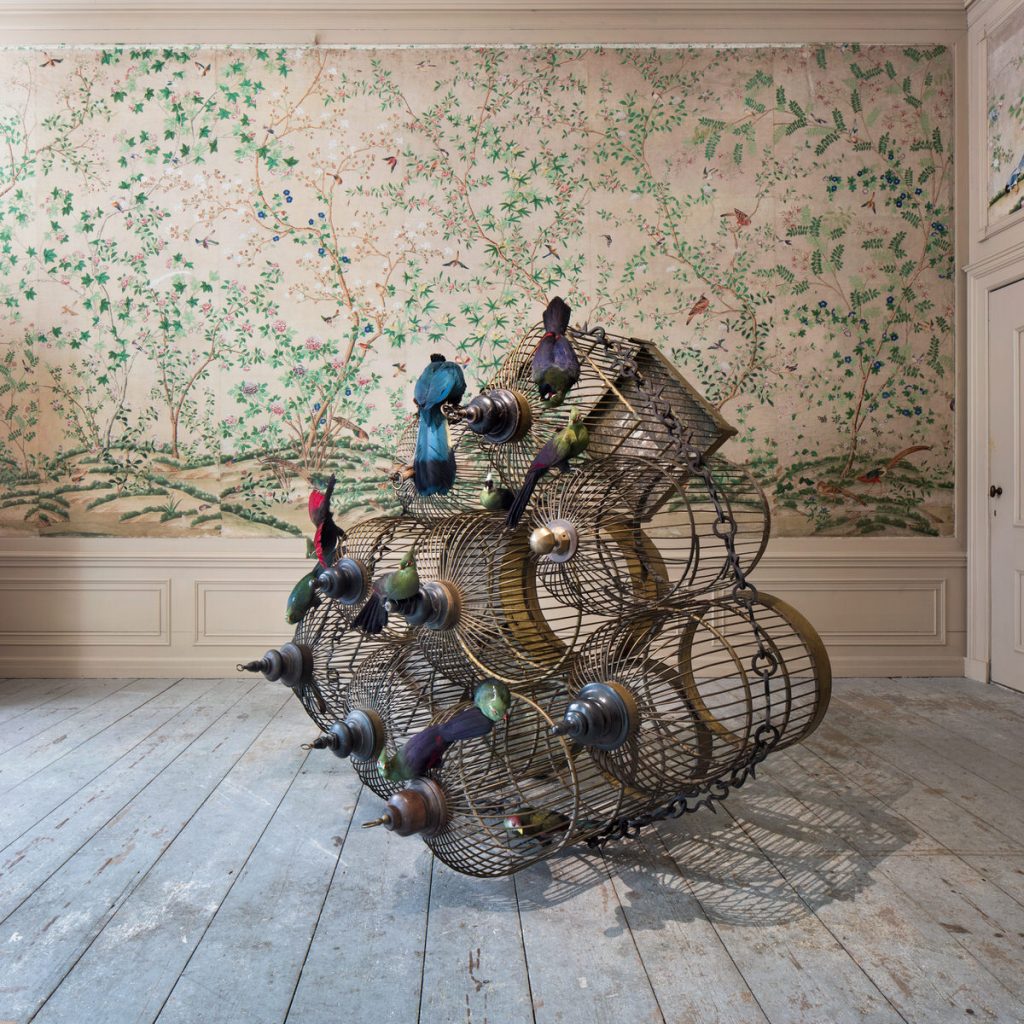
‘Turaco’s inspired by Aert Schouman’ sit within a room that still retains its exquisite 18th century hand painted wallpaper. The wallpaper was made between 1750 and 1770 in China’s Canton province, and came to the Netherlands with the Dutch East India Company. The wallpaper, featuring Chinese birds, hunting scenes and a dragon boat race, is unique.
It is extraordinary to think that that the house was almost demolished, but luckily campaigners chained themselves to the trees surrounding the building and succeeded in saving it and all the original features…
Their new exhibition unites their earliest pieces including pieces lent to the show by Damien Hirst (who bought the artists entire first collection) which includes the ‘Snake Heraldry’ seen below in the first room, placed alongside new works of art that have taken two years to create.
The artist’s early taxidermy works are interwoven with new works.
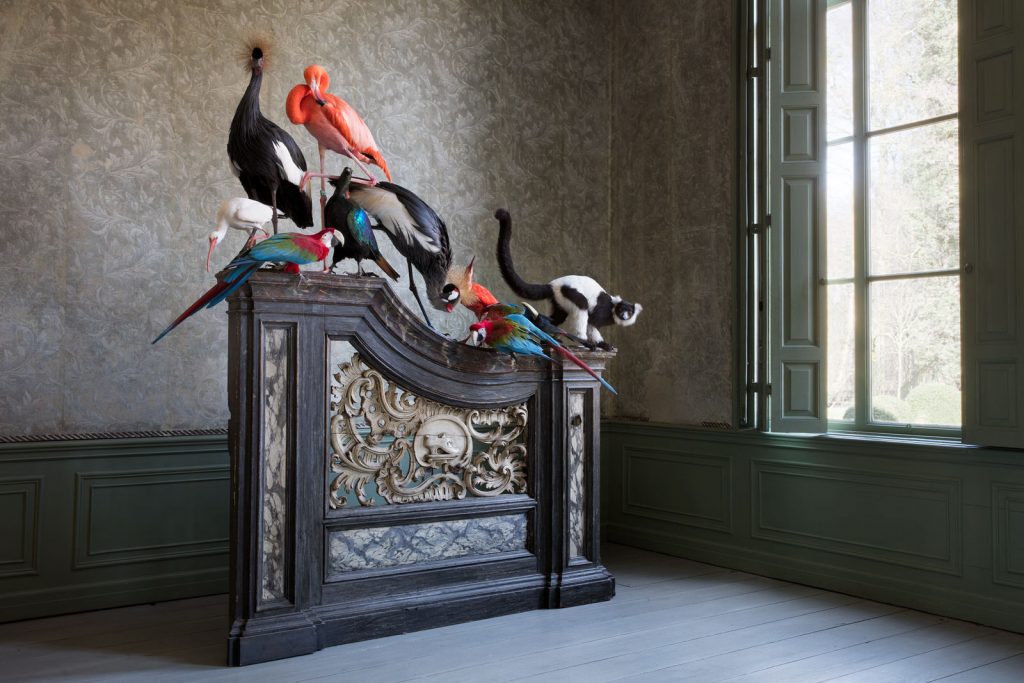 ‘Enraged Vari according to d’Hondecoeter’
‘Enraged Vari according to d’Hondecoeter’
‘Installation Dr. Auzoux Gorilla’
Their studio is a former abattoir where centuries ago, through the ten foot front doors, the horses would take their last walk. The animals that Sinke & van Tongeren work with today pass through these same doors already lifeless, but exit with a new form of life.
I was truly amazed at watching the pair work in their studio. It was absolutely apparent that I was not only in the midst of the most accomplished taxidermists but also draughtsmen, photographers and technicians, constantly working out new ways to create shape and breath life back into the skins and pelts of many rare species.
Ferry jokingly added, ‘even hairdressers too!’, as at one point he was blowdrying the feathers of his favourite bird, the ‘Livingstone Turaco’. He explained to me that he has to manually remind the feathers, every day, to be where they are meant to be, as the internal hand built clay mould dries. If he forgets one day and a change occurs, it cannot be remedied. For it to be perfect, the shell over the clay mould has to be as smooth as silk, so that the skin folds perfectly over, which will encourage each feather to fall exactly where it is meant to. It is meticulous work.
“ I have to have it in my hands to know, to understand what pose it should take” says Ferry.
It is only now, after spending time with Jaap and Ferry, that I truly understand the numerous and painstaking processes within every piece, which take months and months. Firstly of course, it starts with the animal or bird and through the strong relationships that they have developed with conservationists, zoos and breeders they are able to secure the finest specimens from around the world. All of the animals and birds they work with die from natural causes and each piece of taxidermy art comes with its own legal paperwork.
“It’s hell to get there but it’s almost always worth it”
It became very clear to me that taxidermy is a mindset which has to be approached in the most considered calm quiet way.
Ferry admits that he had had to learn the meaning of patience, “Taxidermy has forced me to work on that part of myself”
Haarlem, where the artists live and work, is an elegant and tranquil city, fifteen minutes from Amsterdam, within which there are more wonders to be explored. It is from where the pilgrimage to Santiago de Compostela starts and it is also where you find Holland’s oldest Museum: the Teylers Museum, established in 1778, which is a total joy. It is the only authentic 18th-century museum interior in the world and it houses a magnificent collection of coins, medals and instruments but predominantely a wondrous example of fossils and minerals.
The entrance to the Teylers Museum.
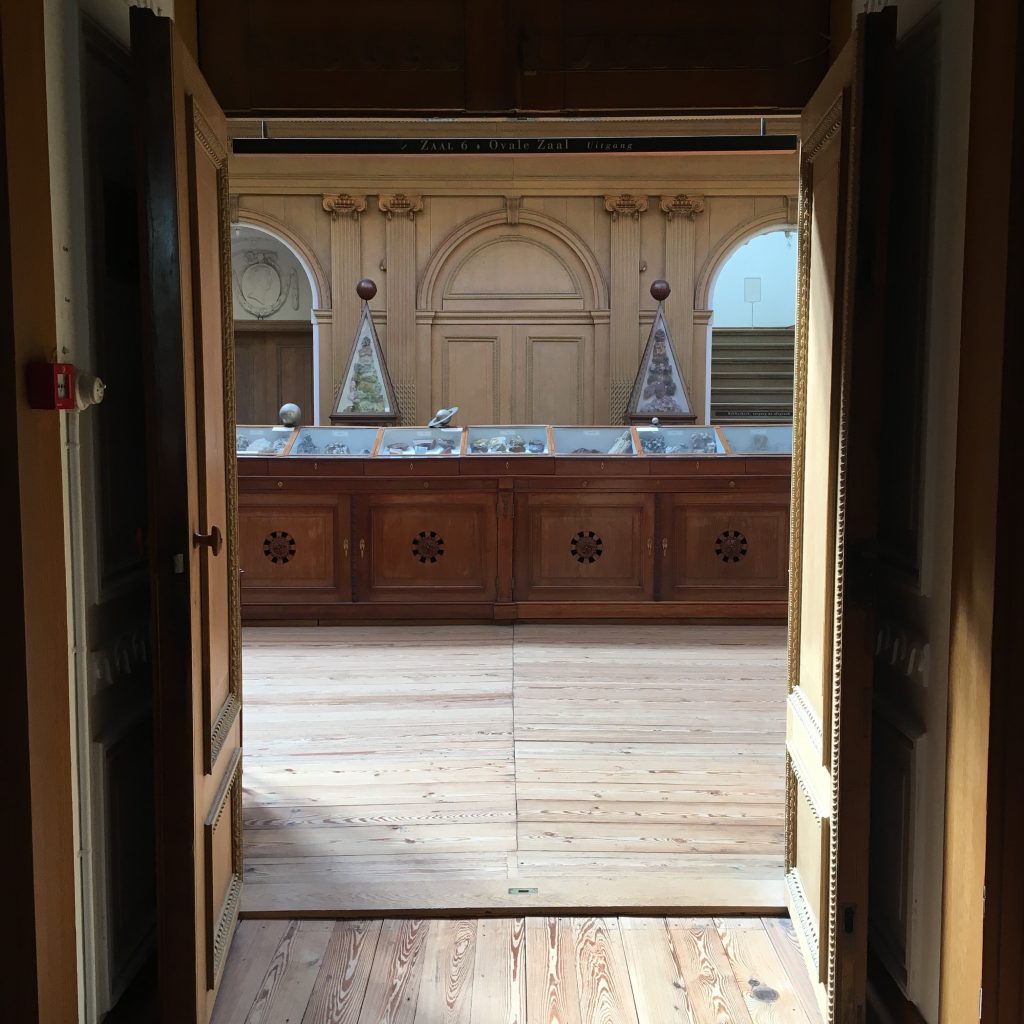 We left the Teylers to share more revelry with Jaap and Ferry and their families and we reflected upon the coincidence of how our collaboration began…
We left the Teylers to share more revelry with Jaap and Ferry and their families and we reflected upon the coincidence of how our collaboration began…
The infamous Siberian Tiger with the wreathed male Hornbill, that was part of their ‘ New Masters‘ exhibition in our London showroom.
The irony is that for a Dutchman, Ferry hates cycling, but serendipity played its part on the day we met. Three years ago there was a tube strike in London and Jaap and Ferry had to hire Boris bikes to cycle to Masterpiece. At the time they were looking for a way to exhibit their taxidermy collections outside of the normal gallery set up. They took a turning down Pimlico Road, saw Jamb and thought ‘That is it!’ In October 2014 we showcased their first collection “Darwin’s Menagerie” at Jamb and in 2016 the ‘New Masters’ collection. It was the beginning of a great collaboration and I am so thrilled we sell their work in our showroom and share their friendship.
‘TIER’ continues until September 2017. For sale enquiries contact: info@finetaxidermy.com. Part of the sales will be gifted towards the upkeep of the MOA.









